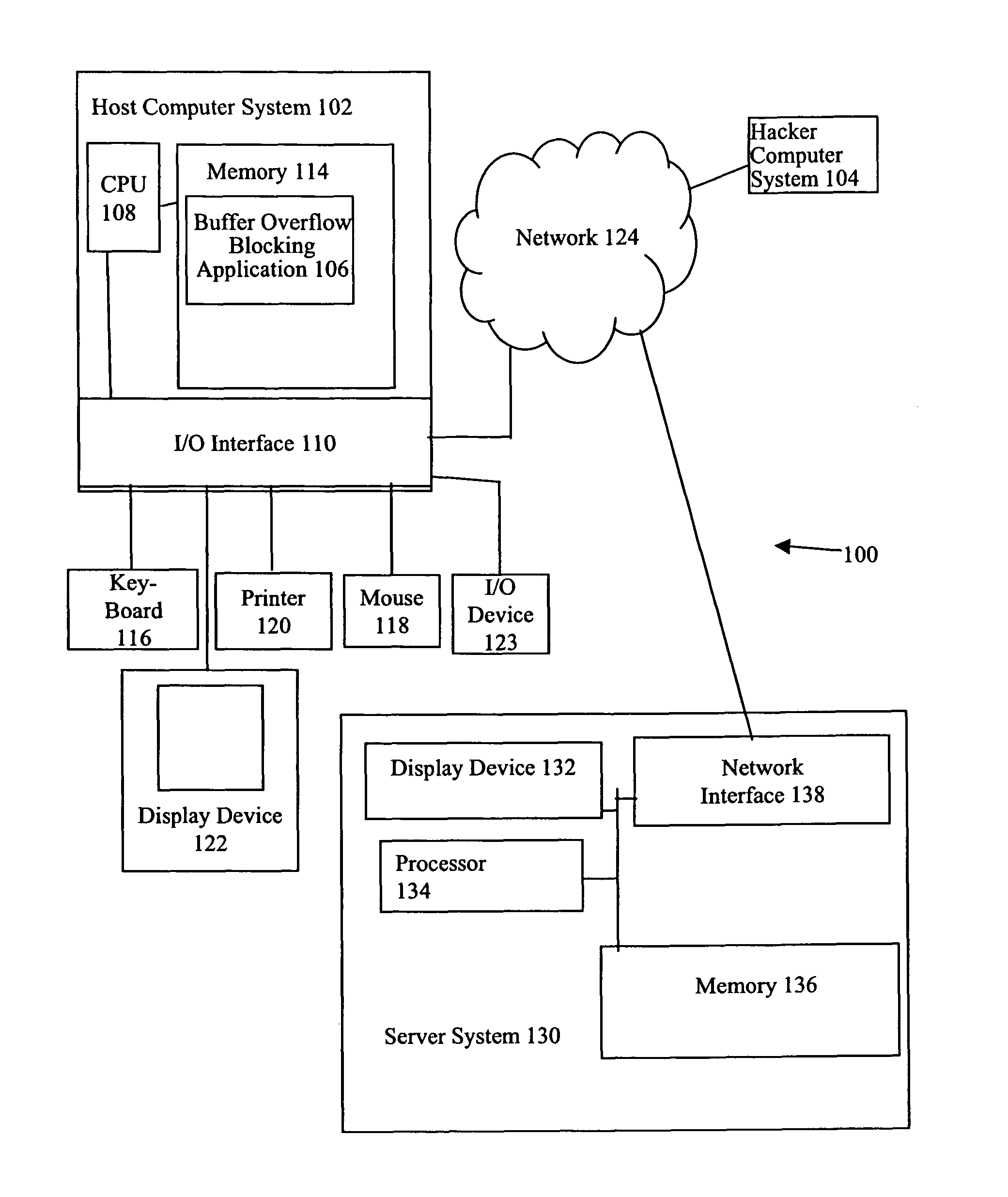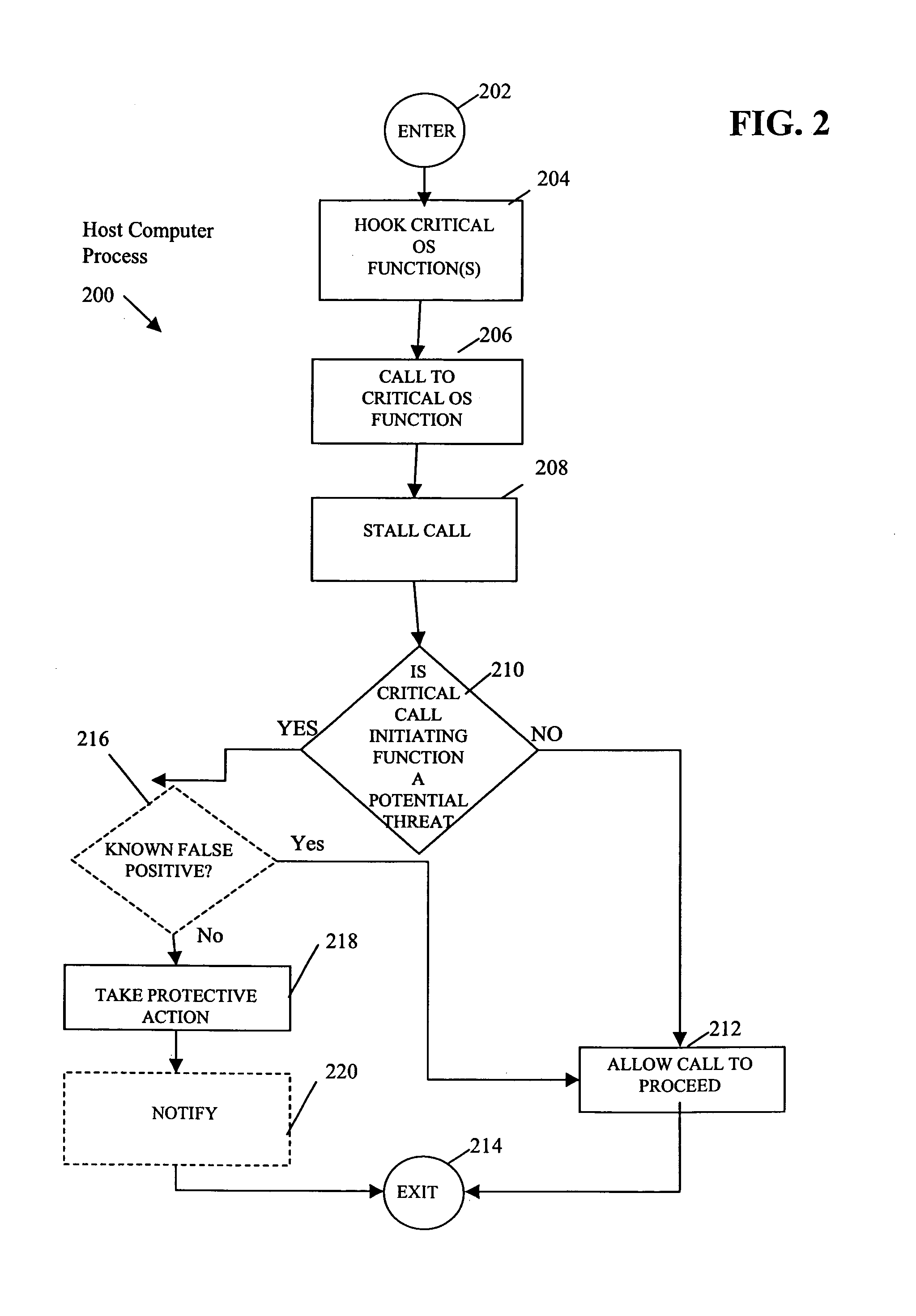Method to identify buffer overflows and RLIBC attacks
a buffer overflow and rlibc technology, applied in error detection/correction, unauthorized memory use protection, instruments, etc., can solve problems such as corrupt valid data, change the execution flow and instructions, and stack-based buffer overflow
- Summary
- Abstract
- Description
- Claims
- Application Information
AI Technical Summary
Benefits of technology
Problems solved by technology
Method used
Image
Examples
Embodiment Construction
[0019]In the following discussion, call instructions are defined as instructions used to invoke a routine or function in a programming language. Calling a routine or function consists of specifying the routine or function name and, optionally, parameters. Calling a routine or function is referred to herein as the routine or function being “called” or “called by a call instruction”. As an example, in a Windows® NT and Windows® 2000 environment the instruction “CALL” is a call instruction.
[0020]In addition, in the following discussion, a call function includes operating system function call instruction(s), i.e., the instruction, or set of instructions, that originates a call to an operating system function. Herein, the process whereby a call function originates a call to an operating system function is referred to as a “call to” an operating system function and the call function making a call to an operating system function is referred to as a “call initiating function”. Call function...
PUM
 Login to View More
Login to View More Abstract
Description
Claims
Application Information
 Login to View More
Login to View More - R&D
- Intellectual Property
- Life Sciences
- Materials
- Tech Scout
- Unparalleled Data Quality
- Higher Quality Content
- 60% Fewer Hallucinations
Browse by: Latest US Patents, China's latest patents, Technical Efficacy Thesaurus, Application Domain, Technology Topic, Popular Technical Reports.
© 2025 PatSnap. All rights reserved.Legal|Privacy policy|Modern Slavery Act Transparency Statement|Sitemap|About US| Contact US: help@patsnap.com



